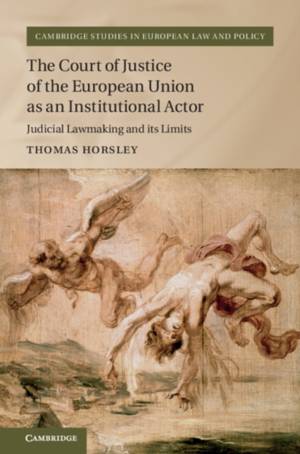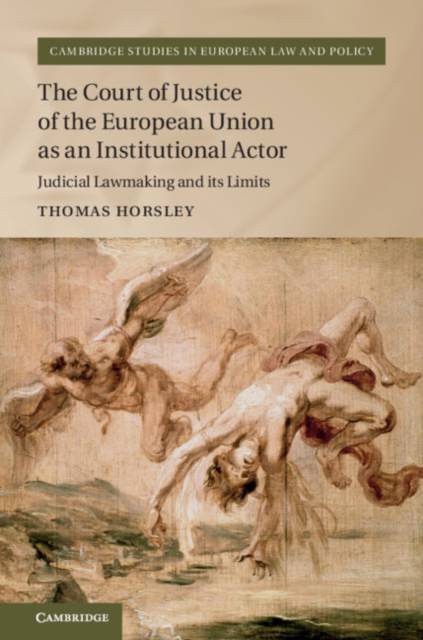
- Afhalen na 1 uur in een winkel met voorraad
- Gratis thuislevering in België vanaf € 30
- Ruim aanbod met 7 miljoen producten
- Afhalen na 1 uur in een winkel met voorraad
- Gratis thuislevering in België vanaf € 30
- Ruim aanbod met 7 miljoen producten
Zoeken
The Court of Justice of the European Union as an Institutional Actor
Judicial Lawmaking and its Limits
Thomas Horsley
€ 187,45
+ 374 punten
Omschrijving
The EU Treaties bind the Court of Justice of the European Union as an institution of the Union. But what does that mean for judicial lawmaking within the EU legal order? And how might any limits set out in the EU Treaties be effectively applied to the Court of Justice as lawmaker? This book interrogates these fundamental and underexplored questions at a critical juncture in European integration. It argues that the EU Treaties should be considered to function as the principal touchstones for assessing the internal constitutionality, and hence legitimacy, of all Union institutional activity - including the work of the Court. It then examines how far the Court of Justice complies with the EU Treaty framework in the exercise of its interpretative functions. The results of that analysis are striking and offer scholars powerful new insights into the nature and limits of the Court's role within the EU legal order.
Specificaties
Betrokkenen
- Auteur(s):
- Uitgeverij:
Inhoud
- Aantal bladzijden:
- 328
- Taal:
- Engels
- Reeks:
Eigenschappen
- Productcode (EAN):
- 9781107124035
- Verschijningsdatum:
- 19/07/2018
- Uitvoering:
- Hardcover
- Formaat:
- Genaaid
- Afmetingen:
- 163 mm x 234 mm
- Gewicht:
- 585 g

Alleen bij Standaard Boekhandel
+ 374 punten op je klantenkaart van Standaard Boekhandel
Beoordelingen
We publiceren alleen reviews die voldoen aan de voorwaarden voor reviews. Bekijk onze voorwaarden voor reviews.








